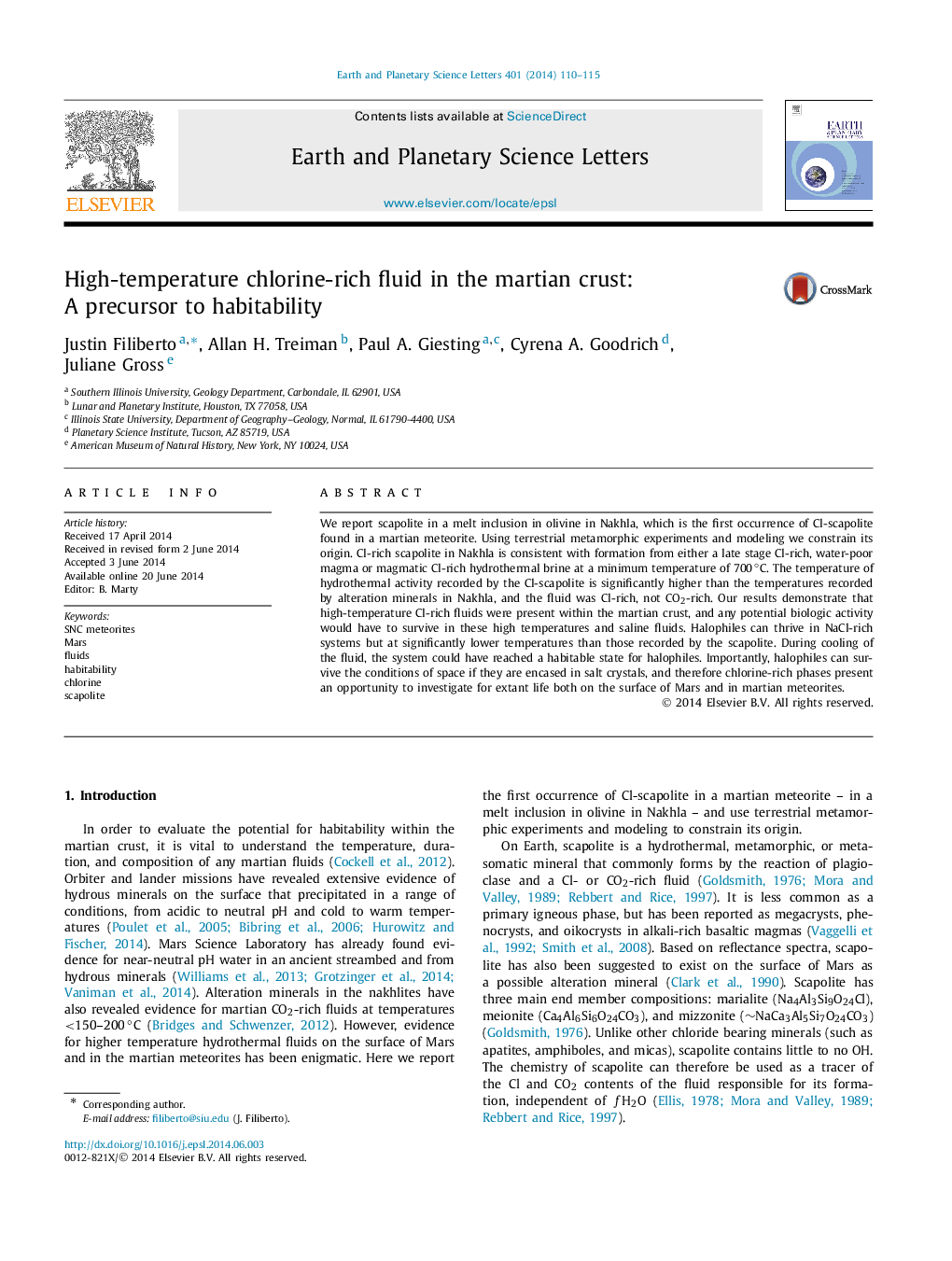| Article ID | Journal | Published Year | Pages | File Type |
|---|---|---|---|---|
| 6429185 | Earth and Planetary Science Letters | 2014 | 6 Pages |
â¢We report the first occurrence of Cl-scapolite in a martian meteorite.â¢Formation from either a late stage Cl-rich magma or magmatic hydrothermal brine.â¢Temperatures of hydrothermal activity are higher than recorded by alteration minerals.â¢Any potential biologic activity would have to endure high temperatures and saline fluids.â¢Chlorine-rich phases present an opportunity to investigate for extant life.
We report scapolite in a melt inclusion in olivine in Nakhla, which is the first occurrence of Cl-scapolite found in a martian meteorite. Using terrestrial metamorphic experiments and modeling we constrain its origin. Cl-rich scapolite in Nakhla is consistent with formation from either a late stage Cl-rich, water-poor magma or magmatic Cl-rich hydrothermal brine at a minimum temperature of 700â°C. The temperature of hydrothermal activity recorded by the Cl-scapolite is significantly higher than the temperatures recorded by alteration minerals in Nakhla, and the fluid was Cl-rich, not CO2-rich. Our results demonstrate that high-temperature Cl-rich fluids were present within the martian crust, and any potential biologic activity would have to survive in these high temperatures and saline fluids. Halophiles can thrive in NaCl-rich systems but at significantly lower temperatures than those recorded by the scapolite. During cooling of the fluid, the system could have reached a habitable state for halophiles. Importantly, halophiles can survive the conditions of space if they are encased in salt crystals, and therefore chlorine-rich phases present an opportunity to investigate for extant life both on the surface of Mars and in martian meteorites.
